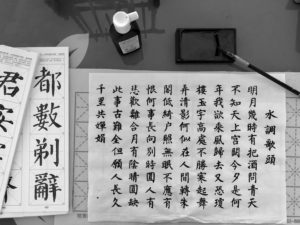Discover the Secrets of the Chinese Language
You’d say “It’s Chinese to me!” when you don’t understand something. But, is the Chinese language really that complicated? It’s actually much simpler than you think. But, it’s more than just simple, it’s downright fascinating. Learn about the interesting history, writing system, pronunciation, and dialects of the Chinese language.
What Do We Mean By Chinese?
Chinese isn’t a single language, it has numerous dialects. Some of which aren’t even mutually intelligible. So, what do we mean when we say Chinese? Is Chinese a dialect group, the standard Mandarin dialect, or the common writing system?
Technically it’s all of those. Chinese is the name of a group of dialects in China. They’re all Chinese languages. And they’re connected by one common writing system. Generally, when people refer to the Chinese language, they mean the standard Mandarin dialect, since that’s the official language of the People’s Republic of China. And, it’s also the language most language learners are familiar with.
What Language Family is Chinese In?
Chinese could be its own language family in a lot of ways. With that many dialects, it makes a lot of sense. But, generally, when we mean standard Chinese or Mandarin, we can categorize it based on its history.
Chinese is part of the Sino-Tibetan language family. That’s why we often call Chinese languages Sinitic languages since this term describes this group more accurately.
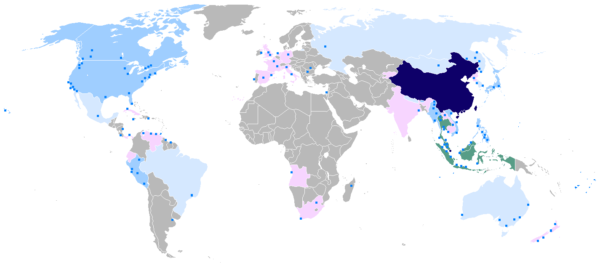
Basic Facts About the Chinese Language
How Many People Speak Chinese?
Chinese is the most widely spoken language in the entire world. There are 1.3 billion Chinese speakers in the world if we count all Chinese dialects. Of these, 917 million speak Mandarin Chinese. And 60 million speak Cantonese. Thanks to Mandarin’s increased popularity, that’s the dialect we mean when we talk about the Chinese language.
Where Is Chinese an Official Language?
Standard Chinese or Mandarin Chinese is the official language of the People’s Republic of China, Taiwan (Republic of China), Singapore, Hong Kong, and Macau.
Taiwanese Mandarin is the official language of Taiwan (Republic of China), and it’s largely mutually intelligible to the mainland Chinese variety. It’s also worth mentioning that in Hong Kong the official language isn’t Mandarin, it’s Cantonese.
There are also 19 other countries which have significant Chinese speaking communities and have Chinese native speakers living within their borders. The most significant of these are Tibet, Thailand, Malaysia, Japan, Vietnam, North Korea, and South Korea. Additionally, there are also major Chinese diaspora communities in the US, Australia, and Europe.

It’s also worth mentioning that Chinese is also one of the six official UN languages.
History of the Chinese Language
Chinese isn’t just widely spoken. It’s also one of the oldest languages in the world. The origins of Chinese date back to the Proto-Sino-Tibetan language, which existed around 6000 years ago. Proto-Sino-Tibetan evolved into the Sinitic languages and Old Chinese subsequently. Although Chinese is an ancient language, the first written evidence of Chinese “only” dates back to 1250 BC.
Old Chinese
Old Chinese developed in the Zhou Dynasty (1046-256 BC) and the Han Dynasty (206 BC to 220 CE). But, Old The written evidence from this period comes from carved pots and poetry. It’s believed that during this period Chinese wasn’t a tonal language yet. That quality of the language developed later.
The most important part of Old Chinese is the creation of Classical (Literary) Chinese. This form of written language continued to be used all through the 20th century. This means that written Chinese is well over 2000 years old, and it’s been relatively unchanged.
Middle Chinese
While written Chinese remained the same, the spoken language continued its evolution. The Middle Chinese period happened between 220 CE and 1279 CE. Middle Chinese is the ancestor of almost all dialects of Modern Chinese. So, (almost) anywhere you go in China, the local dialect could be traced back to this time period. The only exception is Min Chinese, which developed earlier during the Han Dynasty.
Even though it’s the ancestor of modern dialects, Middle Chinese was also divided by its own dialects. But, at that time, they were all mutually intelligible.
During this time period in the language’s history, Classical Literary Chinese was still being used. But, alongside this ancient writing system, another one was also developed. This vernacular writing system represented these new dialects. So, the regional dialects of the Middle Chinese were better represented.
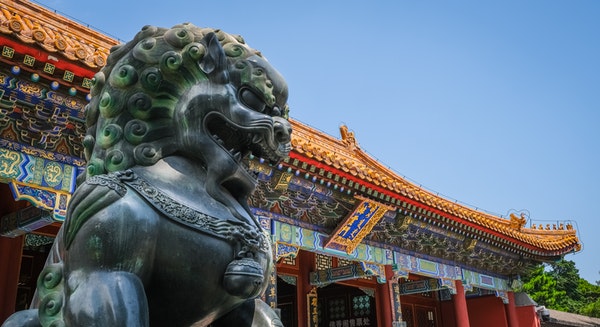
Old Mandarin
A language that’s the ancestor of Modern Mandarin came to be during the Song Dynasty (960-1279). Even during the Yuan Dynasty (1280-1365), Old Mandarin was a major language. During the Yuan Dynasty China was under Mongol rule. Thanks to the Mongol invasion, a lot of Old Mandarin speakers migrated to Southern territories. This spread the dialect even more and influenced other dialects as well.
Middle Mandarin
In the next couple of centuries during the Ming and Quing Dynasties, Mandarin became the official dialect of the Chinese administration. That’s when the name “Mandarin” came to be, as it meant “speech of officials”. By the end of this period, the Beijing variety of Chinese became the most important one. If was called “high variety”, replacing the Nanjing dialect as the official one. The Middle Mandarin period lasted until 1912.
Changes in the Writing System in the 20th Century
Up until the early 20th century, the Classical Literary Chinese was well preserved as the common written language of Chinese. But, after thousands of years of writing with this particular system, it was replaced.
A new vernacular Chinese based on the Mandarin Beijing dialect was introduced as the new official writing system of the Chinese language. Today, this is known as Standard Chinese. Therefore, Standard Chinese is the Beijing Mandarin dialect. Even though Mandarin is actually an umbrella term for other dialects in the Northern part of the country.
Today, Mandarin Chinese is the common written language. It fulfills the same role Classical Chinese used to for thousands of years. But, it’s also worth mentioning that written vernacular Chinese still exists today.
Chinese Dialects
Chinese dialects range from region to region. Often, they’re not even referred to as the same language, since not all are mutually intelligible. But, they all differ in pronunciation, grammar, and vocabulary. The only thing that binds them together is the common writing system.
Some say there are over 200 different types of Chinese dialects in 13 distinct dialectal groups. But, of these only seven are major and important to know about.
- Mandarin 官話
- Yue 粵 (Cantonese 廣東話)
- Xiang 湘語
- Min 閩語
- Gan 贛語
- Wu 吳語
- Hakka 客家話
And even of these seven only Mandarin and Cantonese are globally important. Mandarin and Cantonese aren’t mutually intelligible.
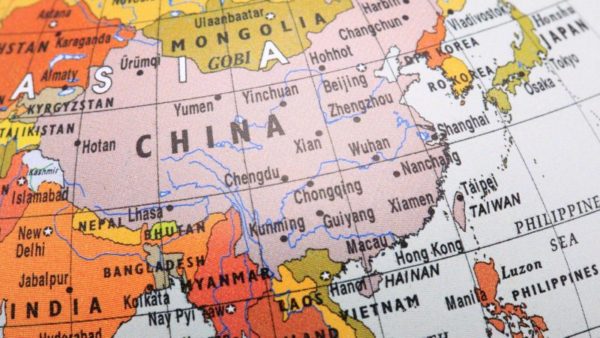
The Chinese Writing System
All Chinese dialects are united by a common writing system. Every Chinese speaking person knows how to write the standard Chinese. But, when they read the words out loud, they read them in their own dialect.
The Chinese language is written with Chinese characters. These are called Hanzi (漢字). These logograms represent meaning. So, a single character could mean an entire word or concept, and it can also be a syllable that needs another to complete the word.
The Logic of the Chinese Writing System
For example, 树 (shù) means tree. This one character represents the meaning of a tree, but it doesn’t represent the sound you make when you say the word out loud.
Sometimes, several characters are put together to make one word. How can this be? Let’s take a look at another example. Mandarin in Chinese is 官話 (guān huà). 官 (guān) means official, and 話 (huà) means language/word/dialect. So, when you put it together, it’s “official language”, a.k.a. Standard Chinese.
Wait, There Are Two Writing Systems In The Chinese Language?
Remember how the standard Chinese writing system changed from Classical Chinese to Mandarin in the 20th century? Well, that wasn’t the only reform of the language that happened in the last century.
To raise literacy rates, they introduced a set of Simplified Chinese characters. So, today, there are two kinds of Chinese writing: Traditional Chinese and Simplified Chinese.
Let’s look at how different these look:
蘋果 – 苹果
Both of these symbols mean “apple”. And both are pronounced as “píngguǒ”. But, the one on the left is written in Traditional Chinese, and the one of the right is Simplified. Most Chinese speakers can read and write both Traditional and Simplified Chinese.
How Can I Learn Chinese Characters?
You need to learn each Chinese character one-by-one. That’s because even if you know what the word means by pronunciation, you won’t know how to write it based on the sound.
How Many Chinese Characters Are There?
There are around 50,000 Chinese characters overall. But, don’t worry, to be fluent in Chinese, you only need to learn a fraction of this. An average Chinese dictionary lists around 20,000 characters. But, everyday Chinese locals only know about 8000. And, they definitely don’t use these in everyday speech.
They only use about 20% of their vocabulary. So if you want to read Chinese newspapers and understand what the locals are saying, you only need about 1600-2000 Chinese characters. That seems like a lot, but if you think of them as separate words (because they are), it’s actually manageable to master.

Chinese Is a Tonal Language
In Chinese, the way you say words matters. Your intonation and where you place the stress can change the meaning of the word. And these tones may also differ between Chinese dialects.
Mandarin Tones
The Mandarin dialect or Standard Chinese has four distinct tones, plus a neutral tone.
- high-flat
- rising
- falling-rising
- falling
- neutral
Cantonese Tones
The Cantonese dialect has six different tones
- high flat
- mid flat
- low flat
- mid rising
- low rising
- low falling
Shanghainese Pitches
In the Shanghainese dialect, tones aren’t as strikingly different as other dialects. Instead, they use pitch accents. So, you can say a word with a high or low tone, and the meaning may still change. And only the first syllable’s tone matters really, so it’s a lot easier to master this dialect in terms of pronunciation. But, it’s not as relevant as the Mandarin dialect.

Chinese Grammar
Since Chinese is written with characters, a lot of people assume that there aren’t any grammatical rules to the language. This, of course, is false. There’s definitely a grammar to the Chinese language. But, luckily, it’s not that hard to learn. Here are some basic Chinese grammatical concepts that prove that learning Chinese doesn’t have to be hard at all.
It’s worth noting that Chinese grammar rules change between the different dialects. But, for language learners who study Mandarin, these rules are relevant.
The Word Order in the Chinese Language
Basic Mandarin has the same word order as English: SVO (subject-verb-object). The same is true for Cantonese and Shanghainese. Although, in some cases, the Mandarin and Shanghainese sentence structure can change to SOV (subject-object-verb).
- 我吃蘋果 (Wǒ chī píngguǒ) – I eat an apple.
我 is “I”, 吃 is “eat”, and 蘋果 is “apple”.
Verbs in the Chinese Language
You’ll be glad to know that verbs in the Chinese language aren’t conjugated by their pronoun. In fact, there’s very little change to verbs, even in tenses.
English |
Chinese |
I eat
you eat he eats she eats we eat you eat they eat |
我吃 (wǒ chī)
你吃 (nǐ chī) 他吃 (tā chī) 她吃 (tā chī) 我們吃 (wǒmen chī) 你們吃 (nǐmen chī) 他們吃 (tāmen chī) |
Is Chinese a Hard Language to Learn?
A lot of people say that Chinese is one of the hardest languages to learn. Well, that really depends on what your native language is. If you’re from Japan, you’re already familiar with the writing system. But, native English speakers have to prepare for a little bit more, unfortunately.
Still, calling Chinese “hard” is inaccurate. There are no “hard” or “easy” languages. Only those that require a longer time to learn. With Chinese, English native speakers need to learn a completely new writing system, vocabulary, and grammatical knowledge. Mastering the tonal pronunciation can also take some practice. But, it’s doable. Millions of learners have reached Chinese fluency before.
According to the US Foreign Service Institute (FSI), Mandarin Chinese is a category 5 language. That means that it’s officially one of the hardest languages to learn, along with Korean, Japanese, and Arabic.
But, there are definitely ways to make it easier. If you use the best language learning methods, learning Chinese won’t be as challenging as people say.
How Long Does Learning Chinese Take?
Again, there’s no way to accurately tell how long it takes to learn a language. That depends entirely on you. How motivated you are, how much time you spend on it every day, and what language learning methods you use.
According to the FSI, languages in the 5th category like Chinese take longer to learn. Their estimates quote 2200 hours for average English native speakers.
But, just like their “hardness”, it’s not an accurate number. With the right language learning methods and with enough enthusiasm, you can easily reach Chinese fluency much faster.
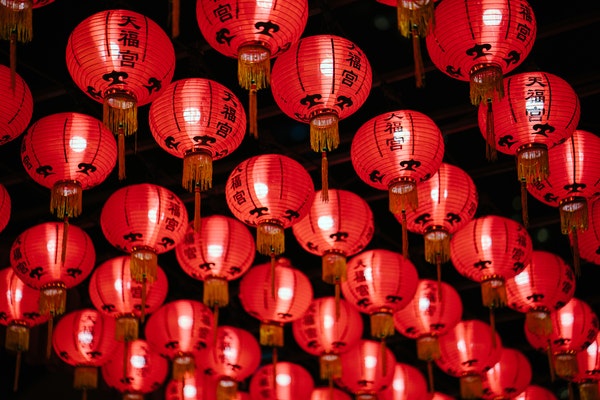
Learn Chinese Easily with the Best App
Ultimately, Chinese is just like any other language. It’s a form of vocal communication. So, all you really need to do is learn the most common phrases in Chinese to talk to the locals. Whether you’re learning Chinese for school or travel, knowing essential phrases is extremely beneficial. And there’s no easier way to learn Chinese than with OptiLingo.
OptiLingo is an app that can take you to Chinese fluency faster than any other. It focuses on the most common Chinese words and phrases. With the built-in pronunciation guides, this app can prepare you best for any conversation in Chinese. Make learning Chinese stress-free and fun by downloading OptiLingo!






